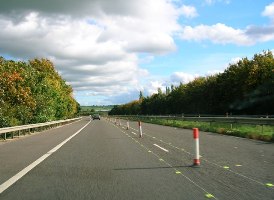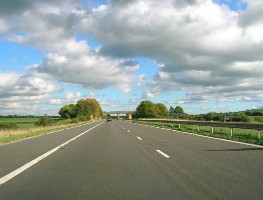The First Heritage Motorway - M45 Dunchurch to Crick
New Status for a Historic Road
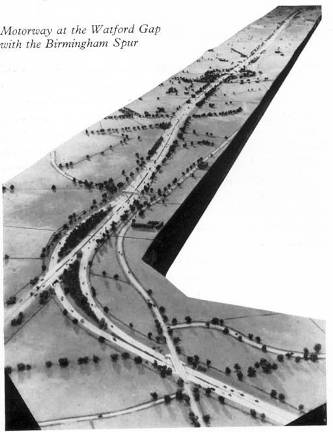
The M45 motorway was opened to traffic in 1959. Whilst not the first motorway to be opened in Britain, the M45's place in our motorway heritage is assured because it was built as part of the first stage of the M1 London to Birmingham Motorway, opening on the same day as the M1 in November 1959.
Originally intended to be the Birmingham spur off the proposed London to Yorkshire Motorway, the motorway no longer fulfils that purpose - a role instead taken by the M6 a few miles to the north. Consequentially, the M45 carries much less traffic than originally intended, and is in many ways a snapshot of how motorways were first envisaged.
Much further south, work is under way to widen the M1 motorway to dual four-lanes, resulting in the loss of many original features. However, on the M45, the original bridges, designed by Sir Owen Williams and Partners, can be seen in all their glory.
In view of the changes to the M1, it has today been announced that the M45 is to become Britain's first Heritage motorway. This new status is equivalent to Grade 2 Listed Building status and means that over a five year period, many modern features will be restored to their original state. For example, junction signage will be designed to match the original signage on the motorway.
![]() The BBC article is here.
The BBC article is here.
To find out more about the M45, have a look at Steven Jukes's excellent page on Pathetic Motorways, or check out the CBRD Motorway Database.
A historic journey through our motorway heritage
Our journey runs from west to east, starting soon after joining the motorway. You can find the M45 on a map, here. At the time this picture was taken, the motorway was being maintained using modern equipment and signs. It is understood that in future, these will not be permitted.
In the distance we can see the first of the Owen Williams bridges that will now be preserved for ever.
The one intermediate junction on the M45 is not an original feature. It was built in the early 1990s. It is not clear whether the plans to list the road will include the removal of this junction. It was built to provide a bypass for Dunchurch, but the lack of traffic using the M45 suggests that Dunchurch could probably cope with the bypassing traffic back in the town.
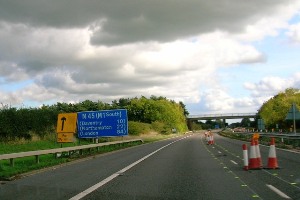
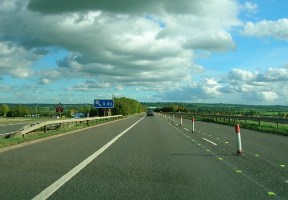
Even with a lane closed, the motorway is more than able to cope with the traffic demands placed upon it. In future, according to the BBC article, only classic vehicles will be permitted to use the road. This means that the traffic loading will be further reduced, which should help to reduce the need for future maintenance.
